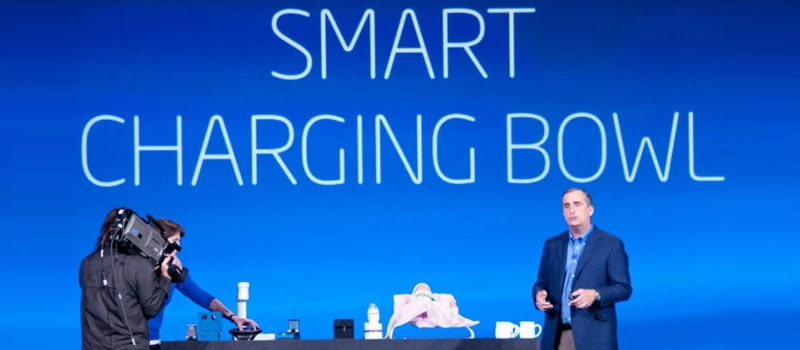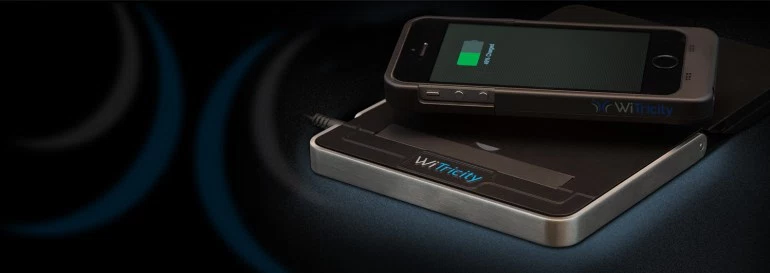
Intel and development of wireless power transmission technology
During the last couple of years, Intel has fueled the demand for PCs, foreshadowing the next great consumer cycle will open a completely new generation of wireless devices.
‘’We carry too many wires’’, – said then Kirk Skaugen (Kirk Skaugen), senior vice president and general manager, Client Computing Group Intel at Computex Taipei 2015. Exhibition – “We keep about six cables: two for the phone, two for two for the tablet and computer. We want to get rid of all those wires … ” But a sensational new feature, Kirk promised will not see the light of day. Kirk Skaugen himself has left the company after 24 years of service. On Computex Taipei 2016 Intel representatives have talked a lot about cloud-based technologies, as much as possible in every way trying to pull away from previously advertised slogan “without wires”. A week earlier, the four top managers of Intel’s Committee AirFuel Alliance resigned. AFA Industrial Group was formed to promote standards of wireless power. The official statement said that employees are leaving the company due to changes in Intel’s strategic priorities.
It’s no secret that the main engine of growth for Intel for many years has been the PC group. In the first quarter of 2016 the group has sold microprocessors with total worth of about $ 7.4 billion., Constituting 54% of total revenues and 73% of solely Intel revenue.
But PC sales worldwide are in a protracted stagnation since 2011. According to IDC, global PC shipments fell by 10.3% in 2015, it was the largest decline in sales in history. Last year, the number of product units sold fell to 300 million, for the first time since 2008. This decline caught the industry by surprise. Back in 2011, IDC predicted that by 2015, shipments will exceed 500 million units. Analysts continue to predict that PC industry will recover, but Intel can not afford to wait. Intel’s client computing group income in 2015 were 9% lower than in 2011.
“We are evolving from the PC manufacturing companies to manage billions of cloud and smart computing devices on the network,” – said CEO Brian Krzhanich to analysts and investors during a teleconference on the financial activities of the company in April. A week later, it became known that the company has decided to discontinue the development of SoC (system on chip) for low-end Android devices based on the Atom platform, and Broxton chips, a new generation of SoC for high-end smartphones and tablets. In its press release, Intel has confirmed that the decision was taken within the framework of non-tech wireless power. “Our strategy of internal development to date is mainly aimed at accelerating the development of the ecosystem, which to a large extent has been achieved”, – the company said.
In 2015, global shipments of wireless receivers (receivers) have reached 144 million units, an increase of 160%, according to IHS data. Marketing Research Group predicts that by 2020, shipments will exceed 1 million units. Currently, receivers are mainly in demand for smartphones. One out of ten phones sold this year is expected to contain a receiver that would allow to charge the battery of the wireless charger.

The main problem faced by the Intel in promoting the wireless power transmission, in transition from smartphones to laptops and other portable computers is that larger devices require more power. “Depending on what you are doing, the device drains in between 30 and 60 watts,” – said John Perzow, Vice-President of Development of Wireless Power Consortium market. The need for additional current intensity makes the problem difficult to transmit sufficient power, increasing the complexity and cost of the device. The increase in power tends to decrease efficiency, it also exacerbates the problem of compliance with electrical safety.
Wireless Power Consortium has solved this problem by transmitting electricity at lower frequencies – from 110 to 205 kHz. But Intel insists on a higher frequency of 6.78 MHz, required by AirFuel Alliance. Higher frequency facilitates the transmission of electricity in the air and, in theory, provides additional spatial freedom, as the transmitter and receiver do not have to be on the same plane. More importantly, there is no limit on the emissions of harmful substances into the atmosphere at a frequency of 6.78 MHz, in accordance with the international standard CISPR 11. This solution would facilitate market entry of technology.
While the Wireless Power Consortium was forced to defend his approach to the spread of wireless electricity, AirFuel Alliance had less to worry about. “Our goal is to manage the ecosystem so that you can have a cost-effective solution and a short time to market. In this case the consumer is sure that the technology meets all regulatory requirements “, – said Mark Hunsicker (Mark Hunsicker), senior director of product management at Qualcomm, one of the co-founders of AirFuel Alliance.
AirFuel Alliance suggested that the recent advances in the field of antennas and semiconductors will increase the efficiency of wireless charging at higher frequencies, chips based on gallium nitride (GaN) looked particularly promising. For power transmission on the air at a frequency of 6.78 MHz, the transmitter must use semiconductor to convert DC to AC by turning on / off 6,780,000 times per second. Whenever semiconductor turns on, it requires a small power amplification. This is not possible with silicon, however with gallium nitride process is faster and consumes less power. Multi-layer antenna represented another important innovation. They soften the phenomenon known as the “skin effect”, which adversely affects the reception of signal from the transmitter. “Using the GaN chip and antenna new design, AirFuel Alliance managed to build a wireless power supply system with a frequency of 6.78 MHz, which will be able to compete effectively with competitors using low-frequency ranges,” – stated Alex Lidow, CEO of Efficient Power Conversion, a leading semiconductor manufacturer of gallium nitride. But Wireless Power did not agree with this opinion.The company says that the higher the frequency, the less effective is the process, even if we take into account the advantages of GaN and new designs of antennas. Research at Colorado State University, carried out as the test operation on behalf of the Wireless Power, confirmed this view.
It will take a lot more time to reach the point where consumers will be able to try out the technology of wireless power transmission in action. At the Computex trade show, WiTricity demonstrated a reporter from CNET Dell a laptop with wireless charging, declaring at the same time that the new device will be “coming soon.” How soon is now?

Intel has confirmed that the company is in close contact with WiTricity, relating to the Intel Capital portfolio, and “that many Intel OEM-partners use» WiTricity solutions. Intel also said it is working with OEM-manufacturersz “to test technical solutions.” Nor WiTricity, nor any other company has been able to predict the date when laptops with wireless power supply hot the market. Pertzow of Wireless Power suggests that the device with the wireless adapter may appear closer to “back to school” shopping season or the Christmas holidays. But the truth remains hidden. “I would like to see these products become available later this year”, – said Pertzow. “I also expect that the actual performance, user experience, level of power efficiency and cost will not meet the expectations of Intel, announced in the past few years.”
- On July 7, 2016
- 0 Comment


